

Zitierweise / cite as:
Payer, Alois <1944 - >: Chronik Thailands = กาลานุกรมสยามประเทศไทย. -- Chronik 1994 / B. E. 2537. -- 1. undatiert. -- Fassung vom 2017-03-19. -- URL: http://www.payer.de/thailandchronik/chronik1994a.htm
Erstmals publiziert: 2012-10-22
Überarbeitungen: 2017-03-19 [Ergänzungen] ; 2016-09-06 [Ergänzungen] ; 2016-06-02 [Ergänzungen] ; 2016-05-02 [Ergänzungen] ; 2016-03-21 [Ergänzungen] ; 2016-02-10 [Ergänzungen] ; 2015-05-25 [Ergänzungen] ; 2015-04-26 [Ergänzungen] ; 2015-04-09 [Ergänzungen] ; 2014-11-18 [Ergänzungen] ; 2014-11-08 [Ergänzungen] ; 2014-10-16 [Ergänzungen] ; 2014-09-25 [Ergänzungen] ; 2014-08-25 [Ergänzungen] ; 2014-04-08 [Ergänzungen] ; 2014-02-20 [Ergänzungen] ; 2013-10-27 [Ergänzungen] ; 2013-10-12 [Ergänzungen] ; 2013-04-26 [Ergänzungen] ; 2013-04-26 [Teilung des Jahrgangs] ; 2013-04-21 [Ergänzungen] ; 2013-04-16 [Ergänzungen] ; 2013-03-19 [Ergänzungen] ; 2013-01-25 [Ergänzungen] ; 2013-01-13 [Ergänzungen]
©opyright: Dieser Text steht der Allgemeinheit zur Verfügung. Eine Verwertung in Publikationen, die über übliche Zitate hinausgeht, bedarf der ausdrücklichen Genehmigung des Herausgebers.
Dieser Text ist Teil der Abteilung
Thailand von
Tüpfli's Global Village Library
ช้างตายทั้งตัวเอาใบบัวปิดไม่มิด
|
Gewidmet meiner lieben Frau Margarete Payer die seit unserem ersten Besuch in Thailand 1974 mit mir die Liebe zu den und die Sorge um die Bewohner Thailands teilt. |
|
Bei thailändischen Statistiken muss man mit allen Fehlerquellen rechnen, die in folgendem Werk beschrieben sind:
Die Statistikdiagramme geben also meistens eher qualitative als korrekte quantitative Beziehungen wieder.
|
Statistische Daten 1994:
|
1994
Nationales Jahr der Thai-Kultur
1991 - 1995
Thailändische Gastarbeiter im Ausland:
Abb.: Offiziell gemeldete thailändische Gastarbeiter (in Tausend) 1991 - 1995
[Datenquelle: Guns, girls ... (1998), S. 160]
Abb.: Lage von Singapur, Malysia, Singapur, Brunei, Hong Kong, Taiwan, Japan
[Bildquelle: CIA. -- Public domain]
Abb.: Lage von Libyen, Israel, Saudi-Arabien, Kuwait, Bahrein, Qatar
[Bildquelle: CIA. -- Public domain]
ca. 1994
Sara R. Curran erhält auf die Frage, ob Söhne bzw. Töchter für ihre Eltern sorgen, u.a. folgende Antwort:
"Sara Curran, in her study of women’s migration patterns, quotes a conversation with an older woman about the value of daughters as wage earners. The interviewer asked, "When the children go to live in Bangkok, they send money to you. Is there a difference between sons and daughters?" The respondent answered, "If girls make 5,000 baht, they will send you 5,000 baht. The boys would not send us any money! He would not send us any money! He would not send any to his mother. They do not even make enough for themselves. You cannot depend on sons" (Curran 1994, 69-70)" [Quelle: Sinnott, Megan J.: Toms and dees : transgender identity and female same-sex relationships in Thailand. -- Honolulu : University of Hawaii Pr., 2004. -- 261 S. : Ill. ; 24 cm. -- ISBN 0824828526. -- Zugl. Diss., Univ. of Wisconsin - Madison, 2002. -- S. 68]
1994
Ärztedichte:
Abb.: Anzahl der Ärzte und Anzahl der Einwohner pro Arzt nach Regionen, 1993-12-31
[Datenquelle: Pocket Thailand in figures (1996), S. 19]
Abb.: Thai-Ärzte sind zwar sehr kompetent, aber ungleich verteilt, 2010
[Bildquelle: Wahyu Wijanarko. -- http://www.flickr.com/photos/wahyubumi/5202366489/. -- Zugriff am 2012-02-01. -- Creative Commons Lizenz (Namensnennung, keine kommerzielle Nutzung)]
Abb.: Spitalbetten und Einwohner pro Spitalbett nach Regionen, 1993-12-31
[Datenquelle: Pocket Thailand in figures (1996), S. 19]
Abb.: Krankenhaus, Ubon Ratchathani (อุบลราชธานี), 2009
[Bildquelle: Ronn aka "Blue" Aldaman. -- http://www.flickr.com/photos/12392252@N03/3356069846/. -- Zugriff am 2012-02-01. -- Creative Commons Lizenz (Namensnennung, keine kommerzielle Nutzung, keine Bearbeitung)]
Abb.: Lage von Ubon Ratchathani (อุบลราชธานี)
[Bildquelle: OpenStreetMap. -- Creative Commons Lizenz (Namensnennung, share alike)]
1961 - 2000
Traktoren
Abb.: Anzahl der Traktoren pro km² Ackerfläche, 1961 - 2000
[Datenquelle: http://www.indexmundi.com/facts/thailand/agricultural-machinery. -- Zugriff M a2014-04-08]
1994
Telefone nach Region (in Tausend):
Telefone nach Region (in Tausend), 1994-09-30
[Datenquelle: Pocket Thailand in figures (1996), S. 19]
Abb.: In der Zeit vor dem Handy-Boom waren viele Thais auf öffentliche Telefone angewiesen: Telefonhäuschen, Chinatown (สัมพันธวงศ์), Bangkok, 2006
[Bildquelle: Hdamm / Wikimedia. -- GNU FDLicense]
Abb.: Lage von Chinatown (สัมพันธวงศ์)
[Bildquelle: OpenStreetMap. -- Creative Commons Lizenz (Namensnennung, share alike)]
1994
Universitäts-Studierende:
Abb.: Universitätsstudierende 1994
[Datenquelle: Pocket Thailand in figures (1996), S. 46f.]
Abb.: Universitätsuniformen, 2007
[Bildquelle: Preetam Rai. -- http://www.flickr.com/photos/preetamrai/870235400/. -- Zugriff am 2012-02-16. -- Creative Commons Lizenz (Namensnennung)]
Abb.: An Universitäten 1993 Graduierte
[Datenquelle: Pocket Thailand in figures (1996), S. 46f.]
Abb.: Bachelor-Graduierung, Payap International College (มหาวิทยาลัยพายัพ), Chiang Mai (เชียงใหม่), 2008
[Bildquelle: Payap International College. -- http://www.flickr.com/photos/payapic/2523056907/. -- Zugriff am 2012-02-16. -- Creative Commons Lizenz (Namensnennung, keine kommerzielle Nutzung, share alike)]
Abb.: Lage von Chiang Mai (เชียงใหม่)
[Bildquelle: OpenStreetMap. -- Creative Commons Lizenz (Namensnennung, share alike)]
1994
Studierende an staatlichen Universitäten (außer Open Universities):
Abb.: Studierende an staatlichen Universitäten (außer Open Universities), 1994
[Datenquelle: Pocket Thailand in figures (1996), S. 46]
Abb.: Studienfächer Studierender an staatlichen Universitäten (außer Open Universities), 1994
[Datenquelle: Pocket Thailand in figures (1996), S. 45]
1994
Studierende an Open Universities:
Abb.: Studienfächer Studierender an Open Universities 1994
[Datenquelle: Pocket Thailand in figures (1996), S. 45]
Abb.: Studentin einer Open University, Bangkok, 2008
[Bildquelle: Ian Fuller. -- http://www.flickr.com/photos/ianfuller/2975580554/. -- Zugriff am 2012-02-16. -- Creative Commons Lizenz (Namensnennung, keine kommerzielle Nutzung)]
1994 - 1996
Die Regierung vergibt an Stipendien für Lehramtskandidaten und Berufsschüler in den vier malaiisch-muslimischen Südprovinzen 1.260 Stipendien im Wert von 29 Millionen Baht (d.h. pro Stipendium im Durchschnitt 23.000 Baht).
1989 - 1994
Fläche für Opiumanbau in Provinz Mae Hong Son (แม่ฮ่องสอน)
Abb.: Fläche mit Opiumanbau in der Provinz Mae Hong Son (แม่ฮ่องสอน), 1989 - 1994, in Rai (= 1600 m²)
[Datenquelle: Rita Gebert ; Chupinit Kesmanee [ชูพินิจ เกษมณี]. -- In: Development or domestication? : indigenous peoples of Southeast Asia / ed. Don N McCaskill ; Ken Kampe. -- Chiang Mai : Silkworm Books, 1997. -- 631 S. : Ill. ; 21 cm. -- ISBN 974-7100-33-9. -- S. 370]
1994
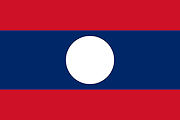
Eröffnung eines internationalen Grenzübergangs von Laos nach Nan (น่าน)
Abb.: Lage des Grenzübergangs
[Bildquelle: UNOSAT / Wikimedia. -- Public domain]
1994/1995

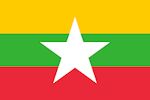
"During the period of my research, it appeared that "fraudulent" transit trade through north-western Laos was somewhat busier. During 1994 and 1995, some of the most active trading companies in both Chiang Khong [เชียงของ] and Houayxay [ຫ້ວຍ ຊາຍ] were involved in dispatching regular cargoes of cigarettes, cloth, and electrical goods up river to the small village of Muangmom where they were transferred across the river to Burma. The goods travelling along this route were goods originating outside Thailand (mainly from Singapore) and it appears that they were imported duty-free at Bangkok as transit cargoes, exported to Laos - where no duty was paid because they were in transit to Burma - and once they were in Burma spirited back into Thailand at the busy border crossing at Mae Sai [แม่สาย] where they were sold for a handsome profit. Tourists buying cheap cigarettes from touts in the busy Mae Sai market were undoubtedly unaware of the level of cross-border economic integration that had contributed to their good fortune. Sometimes the journey through Burma was dispensed with altogether: if the traders received word that there would be no customs patrols, the goods were shipped just a short distance upstream from Houayxay and unloaded into trucks waiting in the small Thai villages dotted along the river-bank. In 1996 I also heard rumours that a prominent Thai businessman and politician was active in the export of water up river from Chiang Saen [เชียงแสน] to China. Of course he claimed that the water was fuel, but it is likely that the fuel - imported into Thailand tax-free as a transit cargo - was profitably sold on the domestic market through his national network of service stations. All in all, it seems that some of the most profitable Quadrangle trade has been based on the manipulation of tariff regimes, rather than on their eradication." [Quelle: Walker, Andrew <1961 - >: The legend of the golden boat : regulation, trade and traders in the borderlands of Laos, Thailand, China, and Burma. -- Honolulu : Univ. of Hawaii Pr., 1999. -- 232 S. : Ill. ; 25 cm. -- (Anthropology of Asia series). -- ISBN 0-8248-2256-0. -- S. 75f. -- Fair use]
Abb.: Lage von Chiang Khong [เชียงของ] / Houayxay [ຫ້ວຍ ຊາຍ], Chiang Saen [เชียงแสน] , Muang Mom, Mae Sai [แม่สาย]
[Bildquelle: OpenStreetMap. -- Creative Commons Lizenz (Namensnennung, share alike)]
1994/1995

Organisation der Mekong-Bootsführer in Chiang Khong [เชียงของ]
"A lifestyle that celebrates mobility is not, however, inconsistent with one that seeks to restrict and regulate. The boat operators are all members of an association (chomrom [ชมรม]) - the Wat Luang Boat Operators ’ Association - whose primary role is to maintain their monopoly on cross-river freight transport and to avoid the over-supply of boats leading to price competition between operators. The central activity of the Association is the coordination of a roster system whereby the fleet of 38 is divided into four groups known as khiw [คิว] (derived from the English "queue"), one of which operates each day the port is open for trade (Monday to Friday). The khiw system is a recognition of substantial oversupply at the port, with one quarter of the boats being quite sufficient to meet cross-river demand on all but the busiest days. It is a carefully structured system with an array of rules and regulations. Khiw membership is fixed and each khiw has its own "office bearers," record books, property (such as shade umbrellas and seats) and bank accounts. Khiw are referred to by their number (one to four), and the order of khiw operations is an idiosyncratic one-three-two- four, a result of an obscure regulatory anomaly in the late 1980s. There is joking rivalry between the khiw about their income-earning abilities and some boat operators even seemed to keep tabs on the number of bottles of whisky I bought for the various khiw in what became something of a Friday evening drinking institution. Freight and passenger fees are set by the Association, and these are strictly enforced. They are strongly biased in favour of Thai traders from Chiang Khong [เชียงของ] who, for example, are charged only 80 baht for a full load whereas their Lao counterparts pay 170 baht. Thai traders are also charged 20 baht for an unlimited number of passenger trips across the river on any one day, whereas Lao traders have to pay 30 baht each time they cross. Members of the Association who are trading on their non-khiw days are not charged any freight or passenger fees at all. All fees are paid to a member of the relevant khiw who acts as the record keeper and port coordinator. This position - known as the kebŋen [เก็บเงิน] (money collector) - is also rostered with a different khiw member filling it each day and not operating his boat. The kebŋen is the day-to-day enforcer for the Association, busily directing loads of cargo to boats, stepping deftly across the loaded boats to collect payments from traders and conducting vigorous negotiations when traders dispute his assessment of the amount payable. Some Association members are much more capable kebŋen than others, and they are often paid by less confident and assertive members to take their turn in the position.
At the end of the day, the members of the relevant khiw adjourn to one of the Association’s sheds overlooking the port for calculation and distribution of the day’s takings. This can be a prolonged and argumentative process, with the cash collected rarely matching the payments recorded in the khiw record book. It can be a nerve-racking time for the kebŋen , who may be required to make up any shortfall from his own pocket. Younger and better educated Association members tend to dominate the discussion, thumping away at their calculators with intimidating speed. Nevertheless, there are clear rules and the formality of the Association’s system of regulation is, once again, highlighted. When a grand total is finally agreed, various deductions are made: fees paid to Thai and Lao immigration police; allowances for fuel; a five per cent levy to meet Association expenses; and numerous special payments with equally numerous special rationales. The balance is divided evenly between the khiw members, including the kebŋen, and the amount set aside for fuel is allocated according to the number of trips each member has undertaken. All payments are carefully recorded and the records are prodigiously annotated so that the fairness and propriety of the system is abundantly clear. To exclamations of riabrooy [เรียบร้อย] (everything in order), the books are closed.
The daily payments made to khiw members vary considerably. Typically, payments are better in the dry season when the level of trade is higher. In the wet season, trade declines as roads in Laos become impassable and Lao energies are diverted to rice cultivation. Payments also vary on a weekly cycle. Fridays are usually the best days, due to the presence of a large market in Chiang Khong which attracts many Lao buyers. Monday is also often busy after the two days of minimal trade on the weekend. Given the four day rotation, the khiw that works Monday also works the following Friday, always considered a bonus. Individual daily payments of 400 to 500 baht are acceptable, disappointing on a Friday but good enough on other days. Amounts above 600 baht are considered good, with the 1,000 baht barrier only being breached a few times per year. On one occasion, when individual payments were around 900 baht in the normally depressed wet season, some of the khiw members put on a great show of excitement. One pretended to shake with nervousness as he took the money, another carefully rolled up his sleeves and brushed his hair as his name was called. The trader-wife of the kebŋen sat watching, drinking beer through a straw."
[Quelle: Walker, Andrew <1961 - >: The legend of the golden boat : regulation, trade and traders in the borderlands of Laos, Thailand, China, and Burma. -- Honolulu : Univ. of Hawaii Pr., 1999. -- 232 S. : Ill. ; 25 cm. -- (Anthropology of Asia series). -- ISBN 0-8248-2256-0. -- S. 98ff. -- Fair use]
1994/1995

Thailändische Kapital in Laotischen Sägereien:
Standort Erbaut Investoren Kapazität
(m³/Jahr)Hauptsächliche Herkunft des Holzes Sin Udom (สินอุดม) 1968 Thai 9.000 Bokeo (ບໍ່ແກ້ວ) Bandan 1968 Thai 10.000 Bokeo (ບໍ່ແກ້ວ), Special Region Xaisomboun (ເຂດພິເສດໄຊສົມບູນ) Luang Namtha (ຫລວງນໍ້າທາ) 1976 Thai 7.500 Luang Namtha (ຫລວງນໍ້າທາ) Pakkhop (ปากคอบ) 1994 Thai 11.000 Special Region Xaisomboun (ເຂດພິເສດໄຊສົມບູນ) Muang Houn (ເມືອງ ຮຸນ) 1994 Thai/Lao 12.000 Oudomxai (ອຸດົມໄຊ) Pakbeng (ປາກແບ່ງ) 1995 Thai 11.000 Oudomxai (ອຸດົມໄຊ), Special Region Xaisomboun (ເຂດພິເສດໄຊສົມບູນ) [Datenquelle: Walker, Andrew <1961 - >: The legend of the golden boat : regulation, trade and traders in the borderlands of Laos, Thailand, China, and Burma. -- Honolulu : Univ. of Hawaii Pr., 1999. -- 232 S. : Ill. ; 25 cm. -- (Anthropology of Asia series). -- ISBN 0-8248-2256-0. -- S. 169]
Abb.: Lage der Provinzen Bokeo (ບໍ່ແກ້ວ), Luang Namtha (ຫລວງນໍ້າທາ), Oudomxai (ອຸດົມໄຊ) sowie der Special Region Xaisomboun (ເຂດພິເສດໄຊສົມບູນ)
[Bildquelle: CIA. -- Public domain]
1994 - 1996

Wichtigste Produkte, die laotische Händler in Chiang Khong [เชียงของ] einkaufen:
Bei Gemischtwarenhändlern:
Kondensmilch
Orangensaft
Soft Drinks
Tonic Drinks
Ovomaltine
Instant-Kaffee
Fischkonserven
Getrockneter Tintenfisch
Biskuits
Süßigkeiten
Glutamat
Speiseöl
Zucker
Klopapier
Damenbinden
Strip-Höschen
Bodenmatten
Matratzen
Decken
Waschpulver
Seife
Zahnpaste
Tuch
Seile
In Spezialgeschäften:
Verzinktes Eisen
Kunstfaser-Dachbedeckung
Kloschüsseln
Holzkohleofen
Motoröl
Batteriesäure
Zement
Ziegel
Asbestplatten
Fahrräder
Fernsehgeräte
Arzneimittel
Am Freitagsmarkt:
Kleidung
Kosmetika
Schuhe
Plastikspielzeug
Anderswo:
Eier
Kokosnüsse
Früchte
Mineralwasser
1994

Gründung des Highland Training and Development Center an der University Chiang Mai (มหาวิทยาลัยเชียงใหม่) mit Unterstützung Japans und der Narcotics control section der US-Botschaft. Es soll Alternativen zum Opiumanbau durch die Bergvölker erforschen und fördern. 2001 wird es mit dem 2001Highland Coffee Research and Development Center (untesrtützt vom niederländischen Staat) und der Higland Reserach and Training Station (zuerst unterstützt vom UNFADAC der UNO, später vom Thai Staat) vereinigt zum Highland Research and Training Center der Chiang Mai University.
Abb.: DEnsity of opium poppy growing areas
[Bildquelle: US DoS / The Eagle and the elephant : Thai-American relations since 1833 = ความสัมพันธ์ไทย-อเมริกัน ตั้งแต่ พ.ศ. 2376. -- Golden Jubilee ed. = ฉบับกาญจนาภิเซกสมโภช / ed. Patricia Norland [u.a.]. -- Bangkok : United States Information Service, 1997. -- 279 S. : Ill. ; 29 cm. -- ISBN 974-89415-1-5. -- S. 146]
1994

Als erster Ausländer erhält Chakkrit Dhammawichai (จักรกฤษณ์ ธรรมวิชัย) den "The best Air Force cadet of the year award". Er ist der Jahrgangsbeste von über 1.000 Kadetten. Er ist 1991 - 1994 mit einem Stipendium zur Ausbildung an der U.S. Air Force Academy in Colorado Springs.
Abb.: Chakkrit Dhammawichai (จักรกฤษณ์ ธรรมวิชัย)
[Bildquelle: The Eagle and the elephant : Thai-American relations since 1833 = ความสัมพันธ์ไทย-อเมริกัน ตั้งแต่ พ.ศ. 2376. -- Golden Jubilee ed. = ฉบับกาญจนาภิเซกสมโภช / ed. Patricia Norland [u.a.]. -- Bangkok : United States Information Service, 1997. -- 279 S. : Ill. ; 29 cm. -- ISBN 974-89415-1-5. -- S. 135]
Abb.: Lage der U.S. Air Force Academy Colorado Springs
[Bildquelle: OpenStreetMap. -- Creative Commons Lizenz (Namensnennung, share alike)]
"The United States Air Force Academy (USAFA or Air Force Academy), is a military academy for officer candidates for the United States Air Force. Its campus is located immediately north of Colorado Springs in El Paso County, Colorado, United States. The Academy's stated mission is "to educate, train, and inspire men and women to become officers of character, motivated to lead the United States Air Force in service to our nation."[2] It is the youngest of the five United States service academies, having graduated its first class in 1959. Graduates of the Academy's four-year program receive a Bachelor of Science degree, and are commissioned as second lieutenants in the United States Air Force.[3] The Academy is also one of the largest tourist attractions in Colorado, attracting more than a million visitors each year.[2] Candidates for admission are judged on their academic achievement, demonstrated leadership, athletics and character. To gain admission, candidates must also pass a fitness test, undergo a thorough medical examination, and secure a nomination, which usually comes from the member of Congress in the candidate's home district. Recent incoming classes have had about 1,200 cadets; historically just under 1,000 of those will graduate.[4] Tuition along with room and board are all paid for by the U.S. government. Cadets receive a monthly stipend, but incur a commitment to serve a number of years of military service after graduation.[5]
The program at the Academy is guided by the Air Force's core values of "Integrity First, Service Before Self, and Excellence in All We Do",[2] and based on four "pillars of excellence": military training, academics, athletics and character development.[2] In addition to a rigorous military training regimen, cadets also take a broad academic course load with an extensive core curriculum in engineering, humanities, social sciences, basic sciences, military studies and physical education. All cadets participate in either intercollegiate or intramural athletics, and a thorough character development and leadership curriculum provides cadets a basis for future officership. Each of the components of the program is intended to give cadets the skills and knowledge that they will need for success as officers."
[Quelle: http://en.wikipedia.org/wiki/United_States_Air_Force_Academy. -- Zugriff am 2015-04-26]
1994

Der US-Bürger S. Douglas Sheldon gründet Indochina Healthcare Limited (IHL) zum Vertrieb von preisgünstigen hochwertigen Generika an Thai-Spitäler.
1994


Chiang Mai (เชียงใหม่): Die evangelikale Marburger Mission gründet in Zusammenarbeit mit der Deutschen Botschaft die Christliche Deutsche Schule Chiang Mai.
Abb.: ®Logo
1994
Die Regierung ändert ihre Strategie zur Befriedung der vier malaiisch-muslimischen Südprovinzen: "economics leads": "economics leads, public relations follows, peace and order supports."
1994
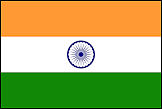
Bangkok: Der Inder Aloke Lohia (1958 - ) gründet Indorama Holdings. Daraus entwickelt sich das multinationale Indorama Ventures mit Hauptsitz in Bangkok.
Abb.: Aloke Lohia, 2012
[Bildquelle:
"Aloke Lohia is the Founder and Group CEO of Indorama Ventures PCL.[1] He is the “Chairman of the Enterprise Risk Committee”[2] and a “Member of the Nomination, Compensation and Corporate Governance Committee”[3] of the company. From 1979 to 1987, he was the Finance Director of P.T. Indorama Synthetics, Indonesia, and in 1994 he founded Indorama Ventures in Thailand. According to Forbes rankings in June 2014, Aloke Lohia has a net worth of $1.2 Billion and is ranked as the 18th richest person in Thailand.
BackgroundAloke was educated at Delhi University where he received Bachelor of Commerce degree. He moved to Thailand and has lived in the country for over 20 years, since 1988, during which time he founded Indorama Chemicals (now known as Aurus Specialty Company Limited).[5] This very first business of Aloke was about turning corncobs into furfural alcohol. The investment was supported by the German Investment Corporation or DEG (Deutsche Investitions- und Entwicklungsgesellschaft).[6] Aloke started Thailand’s first wool business under the name Indorama Holdings in 1994. Then he started Thailand’s first PET (Polyethylene Terephthalate) business, Indorama Polymers, in 1995.[7] In February 2010, Lohia delisted Indorama Polymers and simultaneously listed its parent company Indorama Ventures on the Stock Exchange of Thailand.[8]
Indorama Ventures' revenue was approximately $7.5 billion at the end of 2013.[9]
Personal & family lifeAloke is married to Suchitra Lohia who runs the packaging arm of the company and is a director and Vice Chairman of the company as well as several of its subsidiaries. Suchitra is a Bachelor of Commerce graduate of Delhi University and of the OPM Executive Education Program of Harvard University.[10]
Aloke and Suchitra have three children. Their daughter Aradhana Lohia Sharma graduated magna cum laude in Business Management from Babson College in the United States. Aradhana was married on April 21, 2013 to Kevin Sharma, in Florence, Italy.[11] Their son Yashovardhan Lohia studied Engineering Business Management at the University of Warwick in the U.K. Their youngest son Anuj Lohia is studying Business Management at Babson College.
RecognitionIn 2011, Aloke was appointed an Honorary Investment Advisor to the Government of Thailand.[12] In 2011-2013, Aloke Lohia was recognized one of the Top 40 Power Players by ICIS (Independent Chemical Information Service), the world's largest petrochemical market information provider."
[Quelle: http://en.wikipedia.org/wiki/Aloke_Lohia. -- Zugriff am 2014-11-06]
1994

Illegale thailändische Arbeitskräfte in Japan:
Abb.: Beschäftigungen illegaler thailändischer Arbeitskräfte in Japan 1994
[Datenquelle: Guns, girls ... (1998), S. 164]
1994/1995

Einkommen und Ausgaben einer thailändischen Prostituierten in Osaka (大阪, Japan)
Abb.: Aufteilung von 125.000 Baht Monatseinkommen (25 x 5.000 Baht/Kunde) einer Thai Prostituierten in Osaka (大阪, Japan), 1994/1995
[Datenquelle: Pasuk Phongpaichit <ผาสุก พงษ์ไพจิตร, 1946 - > ; Sungsidh Piriyarangsan <สังศิต พิริยะรังสรรค์, 1951 - > ; Nualnoi Treerat <นวลน้อย ตรีรัตน์>: Guns, girls, gambling, ganja : Thailand's illegal economy and public policy. -- Chiang Mai : Silkworm Books, 1998. -- 284 S. ; 22 cm. -- ISBN 4110-1-310-0061. -- S. 189]
Abb.: Lage von Osaka (大阪)
[Bildquelle: OpenStreetMap. -- Creative Commons Lizenz (Namensnennung, share alike)]
1956 - 1994
Akademische Publikationen über Homosexualität
Abb.: Themen von 207 akademischen Publikationen in Thai über Homosexualität, 1956 - 1994
[Datenquelle: Peter A. Jackson <1955 - >. -- In: Genders & sexualities in modern Thailand / edited by Peter A. Jackson [1955 - ] & Nerida M. Cook. -- Chiang Mai : Silkworm, 1999. -- 289 p. ; 23 cm. -- ISBN 9747551071. -- S. 236]
Abb.: Einstellung zur Homosexualität in den 156 akademischen Publikationen zu männlicher Homosexualität (nicht Transgender) 1956 - 1994
[Datenquelle: Peter A. Jackson <1955 - >. -- In: Genders & sexualities in modern Thailand / edited by Peter A. Jackson [1955 - ] & Nerida M. Cook. -- Chiang Mai : Silkworm, 1999. -- 289 p. ; 23 cm. -- ISBN 9747551071. -- S. 237]
1994?
Suphan Buri (สุพรรณบุรี): Einweihung des 123 m hohen Banharn-Jamsai Tower (หอคอยบรรหาร-แจ่มใส). Banharn Silpa-archa (บรรหาร ศิลปอาชา, 1932 - ) behauptet, er und seine Frau Jamsai (แจ่มใส ศิลปอาชา, 1934 - ) habe die 100 Mio. Baht Baukosten fast völlig aus eigenen Mitteln bezahlt. Vermutlich hat er aber staatliche Mittel abgezweigt.
Abb.: Banharn-Jamsai Tower (หอคอยบรรหาร-แจ่มใส), 2008
[Bildquelle: ScorpianPK / Wikimedia. -- GNU FDLicense]
Abb.: Lage von Suphan Buri (สุพรรณบุรี)
[Bildquelle: OpenStreetMap. -- Creative Commons Lizenz (Namensnennung, share alike)]
1994

Es erscheint der Song
พงษ์สิทธิ์ คำภีร์ [Phongsit Khamphi] <1967 - >: โยโกฮามา ["Yokohama [横浜市]"] in der Audiokassette รวมฮิตสุดชีวิต ["Sammlung der Besten Songs-for-Life-Hits"]
Der Song auf Spotify:
URI: spotify:track:6rE9YqYh3KxdCECsIcwXkz
URL: https://open.spotify.com/track/6rE9YqYh3KxdCECsIcwXkz
Abb.: Phongsit Khamphi [พงษ์สิทธิ์ คำภีร์], 2010
[Bildquelle:
Abb.: Cover einer späteren Ausgabe auf CD
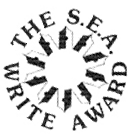
Chart Korbjitti (ชาติ กอบจิตติ, 1954 - ) erhält den Southeast Asian Writers Award für den Roman เวลา (Zeit).
Abb.: Einbandtitel einer der Ausgaben
1994
Gründung des Southern Isan Cultural Center am Rajbhat Institute (สถาบันราชภัฏ, Lehrerbildungsanstalt) in Buri Ram (บุรีรัมย์).
1994
Geschätzte Ausgaben pro Person für die illegale Lotterie (หวยใต้ดิน):
Abb.: Geschätzte jährliche Ausgaben pro Person für die illegale Lotterie (หวยใต้ดิน) in Baht und Prozent des durchschnittlichen Jahreseinkommens, 1994
[Datenquelle: Guns, girls ... (1998), S. 64]
1990 - 1994
Anteil der Schwulen und Bisexuellen an der Gesamtzahl der AIDS-Kranken
Abb.: Anteil der Homosexuellen und Bisexuellen an der Gesamtzahl der AIDS-Kranken, 1990 - 1994 (in Prozent)
[Datenquelle: Jackson, Peter A. <1956 - >: Dear Uncle Go : male homosexuality in Thailand : สวัสดีกรับ อาโก๋ ปากน้ำ. -- Bangkok : Bua Luang, 1995. -- 310 S. : Ill. ; 21 cm. -- ISBN 0942777115. -- Völlige Neubearbeitung von Ders.: Male homosexuality in Thailand : an interpretation of contemporary Thai sources (1989). -- S. 284]
1994

Die Human Development Foundation von Father Joseph (Joe) H. Maier, C.Ss. R., (1939 - ) eröffnet das erste kostenfreie AIDS-Hospiz in Bangkok
1994
Die Punk-Metal-Band Sepia (ซีเปีย) veröffentlicht den Hass-Song เกลียดตุ้ด ["Ich hasse Schwule"] im gleichnamigen Album.
Abb.: CD-Cover
Abb.: Sepia (ซีเปีย)
[Bildquelle: th.Wikipedia]
1985 - 1994
Gemeldete Giftschlangenbisse und Todesfälle durch Giftschlangenbisse:
Abb.: Gemeldete Giftschlangenbisse und Todesfälle durch Giftschlangenbisse 1985 - 1994
[Datenquelle: http://www.thailandsnakes.com/tag/how-common-are-snakes-in-thailand/. -- Zugriff am 2013-10-27]
"Mil Med. 1998 May;163(5):310-7. Venomous snakebite in Thailand. I: Medically important snakes.
Chanhome L, Cox MJ, Wilde H, Jintakoon P, Chaiyabutr N, Sitprija V.SourceQueen Saovabha Memorial Institute, Faculty of Medicine and of Veterinary Science, Chulalongkorn University, Bangkok, Thailand.
Abstract
Thailand has an abundance of venomous snakes.Among the neurotoxic family Elapidae, there are
- three species of the genus Naja (cobras),
- three of the genus Bungarus (kraits), and
- the king cobra of the genus Ophiophagus.
Other Elapidae snakes in Thailand include
- sea snakes and Asian coral snakes of the genus Calliophis. They have potent venoms but rarely bite humans.
Tissue and hemotoxic snakes are represented by
- family Viperidae, subfamilies Viperinae and Crotalinae. They remain an occupational hazard for farmers and rubber tappers, causing serious morbidity but only rare deaths, since competent treatment is now widely available throughout Thailand.
Purified equine antivenin is manufactured locally for the
- monocled and Siamese spitting cobras (Naja kaouthia and N. siamensis),
- king cobra (Ophiophagus hannah),
- banded krait (Bungarus fasciatus),
- most green pit vipers (Trimeresurus sp.),
- Malayan pit viper (Calloselasma rhodostoma), and the
- Siamese Russell's viper (Daboia russelli siamensis)."
[Quelle: http://www.ncbi.nlm.nih.gov/pubmed/9597848. -- Fair use]
1994
Herkunft der ausländischen Touristen.
Abb.: Herkunft der ausländischen Touristen (in Tausend), 1994
[Datenquelle: Pocket Thailand in figures (1996), S. 146]
Abb.: Asiatische Touristengruppe, Suvarnabhumi Airport (ท่าอากาศยานสุวรรณภูมิ), 2006
[Bildquelle: Moritz Schmaltz. -- http://www.flickr.com/photos/mschmaltz/296583079/. -- Zugriff am 2012-02-02. -- Creative Commons Lizenz (Namensnennung, share alike)]
1994
Eröffnung des Pattani Drug Dependence Treatment Center (ศูนย์บำบัดรักษายาเสพติด ปัตตานี)
Abb.: Lage von Pattani (ปัตตานี)
[Bildquelle: OpenStreetMap. -- Creative Commons Lizenz (Namensnennung, share alike)]
1994
Es erscheint:
Odzer, Cleo <1950 - 2001>: Patpong sisters : an American woman's view of the Bangkok sex world. -- New York : Arcade, 1994. -- 313 S. : Ill. -- ISBN 1-55970-281-8.
Abb.: Umschlagtitel
Abb.: Lage von Patpong (พัฒน์พงศ์)
[Bildquelle: OpenStreetMap. -- Creative Commons Lizenz (Namensnennung, share alike)]
"Cleo Odzer (Sheila Lynne Odzer,[1] 6 April 1950 – 26 March 2001[2]) was an American writer, author of books on prostitution in Thailand, the hippie culture of Goa (गोंय), and cybersex. Childhood and being a groupie
She grew up in a wealthy Jewish family[3] in Manhattan, New York City and attended Franklin School (now Dwight School) and Quintano’s School for Young Professionals, graduating from the latter in 1968. At about that time, she began writing about the music scene for a small Greenwich Village newspaper. She met Keith Emerson, then member of the rock band The Nice and later of Emerson, Lake & Palmer, at The Scene nightclub and they were briefly engaged. According to Odzer,[4] Emerson broke off the engagement when he saw a February 1969 Time Magazine article that published her photo and described her as a "Super Groupie."[5] Shortly thereafter in 1969 she recorded an album called The Groupies, produced by Alan Lorber, which essentially consisted of interviews with Cleo and some friends describing their adventures meeting (and sleeping with) rock musicians.
Hippie years in GoaIn the early 1970s, Odzer traveled in Europe and the Middle East and worked as a model. She spent the late 1970s in the hippie culture of Anjuna (हणजुणें), Goa in India. Her experiences there, including heavy use of cocaine and heroin, the international drug smuggling used to finance the stay, and her subsequent two-week incarceration, would later form the basis of her second book, Goa Freaks: My Hippie Years in India (1995, ISBN 1-56201-059-X). For a time she followed the teachings of Bhagwan Shree Rajneesh (रजनीश चन्द्र मोहन जैन) in India.[6]
Return to U.S.; research in ThailandAfter her return to the United States in the late 1970s, Odzer underwent drug treatment at Daytop in New York. She entered college, then graduate school, and in 1990 obtained a Ph.D. in anthropology from The New School for Social Research in New York City with a thesis on prostitution in Thailand. Beginning in 1987, she had spent three years in Thailand to research this topic. In her dissertation, she describes case studies of 17 people connected to the sex industry in Patpong (พัฒน์พงศ์). She concludes that the economic opportunities provided by sex work do not translate into a higher status of women, because of persistent stigma and ideas about gender inequality in Thai society.[7] Her experiences in Thailand were described in her first book, Patpong Sisters: An American Woman's View of the Bangkok Sex World (1994, ISBN 1-55970-281-8). In this work she describes the Thai prostitutes she got to know as quick-witted entrepreneurs rather than exploited victims, sometimes revered in their poor home villages. She also relates her own problematic affair with a Thai pimp boyfriend.
Following publication of the book, Odzer worked at Daytop in New York,[8] the drug rehabilitation organization she herself had attended earlier.
From 1995 to 1998, Odzer produced several dozen episodes of her show Cleo's Adventures for Manhattan Neighborhood Network Public-access television. Her third book, Virtual Spaces: sex and the cyber citizen (1997, ISBN 0-425-15986-8), deals with cybersex. She appeared in episode 1.21 of SexTV in 1999, with a segment on cybersex.
Return to Goa, and deathDisappointed with life in New York, in 1999 Odzer returned to Goa, where some of the remaining old-time hippies disliked her because of the publicity her book had brought to the scene.[9] She died there in 2001. A good friend of hers who had been corresponding with Odzer during her final stay in India, "Cookie" (with whom she recorded The Groupies), reports that Odzer's doctor (who had been away when she died) said she probably died of a stroke related to very high cholesterol and serious circulatory problems that she was being treated for during her final year, and that her body had been cremated after a small service.[10] But a researcher, Arun Saldanha, who interviewed members of the Goa community about Odzer, reports being told by a psychiatrist at the Goa Medical College some ten months after her death that her body had lain unclaimed in a morgue in Mapusa (म्हापसा) for more than a month until finally she had been buried in Mapusa without a funeral, and that she had had AIDS. Saldanha also reports having seen Odzer use cocaine during an interview he had with her sometime before her death.[11]
The 2002 documentary Last Hippie Standing by Marcus Robbin covered the Goa scene and featured some of Cleo Odzer's old super-8 footage from the 1970s. She was interviewed by Robbins for the film in Goa shortly before her death, and said:
- I don't know what the future brings, but I know what I don't want: New York is what I don't want, that culture is what I don't want; it's not right. I don't know what is right. I don't think our old life was right. I don't see a new culture that is right, but we have to continue trying, that's the best we can do, that's the best any of us can do, to keep trying. To make something that is peaceful for everybody, that makes people happy, that is fair to everybody. And that's all I want.[12]
The film was dedicated to her memory.
References
- ^ New York Times, Birth Notices (16 April 1950, p. 105)
- ^ Social Security Death Index entry for Cleo S. Odzer
- ^ Her father was Harry Odzer, president of a textile firm, the Everlined Company. He died shortly before his daughter's sixteenth birthday. (The New York Times, Obituaries, 27 March 1966)
- ^ Interview by Marcus Robbin (January 2000, Goa, India)
- ^ The Groupies, Time, Feb. 28, 1969
- ^ Ma Prem Madhumaya
- ^ Cleo Odzer, Patpong Prostitution. Its Relationship to, and Effect on, The Position of Women in Thai Society. Dissertation, New School for Social Research, April 1990. Abstract
- ^ Urban Desire contributors
- ^ Arun Sladanha, Psychedelic White: Goa Trance and the Viscosity of Race, p. 83-84. University of Minnesota Press, 2007.
- ^ Telephone conversation with Cookie, 5 February 2009.
- ^ Arun Sladanha, Psychedelic White: Goa Trance and the Viscosity of Race, p. 86. University of Minnesota Press, 2007.
- ^ Interview with Cleo Odzer Part Nine: RETURN TO GOA"
[Quelle: http://en.wikipedia.org/wiki/Cleo_Odzer. -- Zugriff am 2012-09-24]
1994

Es erscheint:
Das siamesische Lächeln : Literatur und Revolte in Thailand / Hella Kothmann (Hrsg.). Mit einem Nachw. von Ingvar Sander. -- Köln : ISP, 1994. -- 163 S. : Ill. ; 21 cm. -- ISBN 3-929008-71-8
Abb.: Einbandtitel
1994

Es erscheint der Roman
Jackson, Peter A. <1956 - >: The intrinsic quality of skin. -- Bangkok : Floating Lotus Books, 1994. -- 179 S. ; 22 cm. -- ISBN 0942777107
Es ist ein Roman über den Weg eines westlichen Schwulen durch die thailändische Schwulenszene.
Abb.: Einbandtitel
1985 - 2010

Rüstungsexporte Chinas nach Thailand zu konstanten (1990) Preisen:
Abb.: Rüstungsexporte Chinas nach Thailand zu konstanten (1990) Preisen (in Mio. US-$), 1985 - 2010
[Datenquelle: SIPRI]
1994
In TV-Channel 7 (ช่อง 7 สี) läuft das Lakorn (ละคร - Soap Opera) Dao Pra Sook (ดาวพระศุกร์).
Abb.: Plakat
[Fair use]
"Dao Pra Sook (Thai: ดาวพระศุกร์) is a Thai lakorn which has been remade several times. The latest of which aired on Thailand's channel 7 in 1994 and was one of the most popular lakorns in the country. It starred Sornram Teppitak (ศรราม เทพพิทักษ์, 1973 - ) as Phak (Thai ภาคย์) and Suvanant Kongying (สุวนันท์ คงยิ่ง, 1978 - ) as Daoprasook (Thai ดาว). The plot is about a wealthy man who 'buys' a prostitute from a brothel and later falls in love with her. The shows were regarded by some as the most cliché (น้ำเน่า) soap opera in Thailand. Summary
A young woman gives birth at dawn to a baby girl, whom leaves her daughter as soon as she can. The girl, later named Daoprasook by the nurses because the planet Venus (ดาวพระศุกร์ - "daoprasook" in Thai) was visible at the time of her birth. Later, a childless couple adopts Dao. However, as soon as they adopt her, the wife becomes pregnant and gives birth to a daughter. In true lakorn's fashion, the young Dao is abused by her adoptive mother to the point where she decides to run away. Now on the streets, she uses her wit to survive until a kind-hearted prostitute takes her under her wings.
Years later, Dao is now a beautiful teenager who is forced to work to help the kind prostitute who raised her. Of course, she is too moral to sell herself so she would fooled her customers into a darkened room where she would switch another prostitute for herself. She soon gains a certain amount of fame with many men seeking her service.
Khun Phak, a rich businessman meets Daoprasook and somehow makes a deal with the brothel's managing woman. He buys her and forces her to move in to his house. What occurred next can be imagined. Phak at first despises Dao for being a prostitute who gave one of his friends, her customer, an STD. He decides to have her tested. The result puzzles him greatly, as she is perfectly healthy. All this while, Dao is abused by a servant called Maew in Phak's house. Maew's loyalty lies with Mayarasamee (มาหยารัศมี), who wants to marry the wealthy Phak. Undaunted, Dao proves herself to Phak to be a lady and endures all verbal abuses directed at her. The only kindness she finds and by which she is comforted is from an elderly man, a businessman like Phak. However, she has secretly fallen in love with Phak and vice versa. Although he has been able to restrain himself from sexually abusing Dao all this time, the news of Dao's relationship with another man angered him. With a drunken rage, he storms into Dao's bedroom and begins to make sexual advances on the young girl. Dao, in a state of shock that Phak, who has been a gentleman in this matter, is trying to abuse her tries to fight back, only later losing because of her feelings to Phak. That night, they consummated their love. The next morning, upon seeing the blood stain on the bed-sheet, Phak realizes that he is the first for Dao who is grieving over her lost virginity, something that she has guarded dearly for a long time.
In a twist of fate, the mother of Dao who abandoned her 18 years ago at the hospital meets her at Phak's house and recognizes her first daughter when she sees a heart-shaped scar on Dao's upper chest. She is now married with a young son. Convinced that the businessman (and he is) is in love with Dao, she reveals her secret to him, telling him that their affair produced a child, a daughter who is Daoprasook. The truth comes out and changes Dao's status immediately. She is now the daughter of a respected woman and a rich businessman. Still she yearns for love from Phak, who she considers to be her husband. He also happens to related to her as he is a cousin to Dao's mother, making her his second cousin. As can be expected from a lakorn, Phak reveals his true feelings to Dao and asks her to marry him. The lakorn ends with their lavished wedding."
[Quelle: http://en.wikipedia.org/wiki/Dao_pra_sook. -- Zugriff am 2012-03-06]
1994
Premiere des Films Amdaeng Muen Kab Nai Rid (อำแดงเหมือนกับนายริด, Muen and Rid) des Regisseurs Cherd Songsri (1931 - 2006). Der Film handelt von einer Frau, die sich in einen Mönch verliebt. Der Mönch tritt aus dem Orden aus und die beiden entfliehen der vorurteilsbehafteten Gesellschaft. Die ungebildete Frau kämpft um ihr Recht auf Bildung.
Abb.: Plakat
[Fair use]
1994
Premiere des Films Blackbirds at Bangpleng (กาเหว่าที่บางเพลง) von Niratisai Kanjareuk (นิรัตติศัย กัลย์จาฤก).
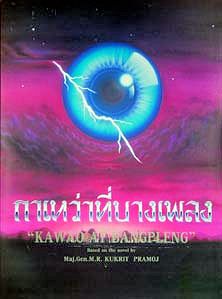
Abb.: Plakat
[Bildquelle: Wikipedia. -- Fair use]
|
"Blackbirds at Bangpleng (Thai: กาเหว่าที่บางเพลง, Kawao tee Bangpleng or, literally, Cuckoos at Bangpleng) is a 1994 Thai science fiction horror film. Though it is based on a novel by the famous Thai writer and politician Kukrit Pramoj (คึกฤทธิ์ ปราโมช, 1911 - 1995), the story closely mirrors The Midwich Cuckoos (1957) by John Wyndham (1903 - 1969), which itself was adapted into the 1960 film, Village of the Damned.[1] PlotA village in rural Thailand is celebrating Loy Krathong (ลอยกระทง), when the festivities are disrupted by the descent of a spaceship. Ray beams are fired from the craft and all the village's women find they are suddenly pregnant. Only a few hours later the women give birth. The alien offspring have the power to kill by just staring and they have an insatiable appetite for raw meat." [Quelle: http://en.wikipedia.org/wiki/Blackbirds_at_Bangpleng. -- Zugriff am 2013-03-19] |
1994
In Bangkok wird Thailands erstes Multiplex-Kino eröffnet.
1994
Gründung der Rock-Band Modern Dog (โมเดิร์นด็อก)
Die Gruppe auf Spotify:
URI:
spotify:artist:2xuN796lJ8Oj4vsx2XiJqj
URL:
https://open.spotify.com/artist/2xuN796lJ8Oj4vsx2XiJqj
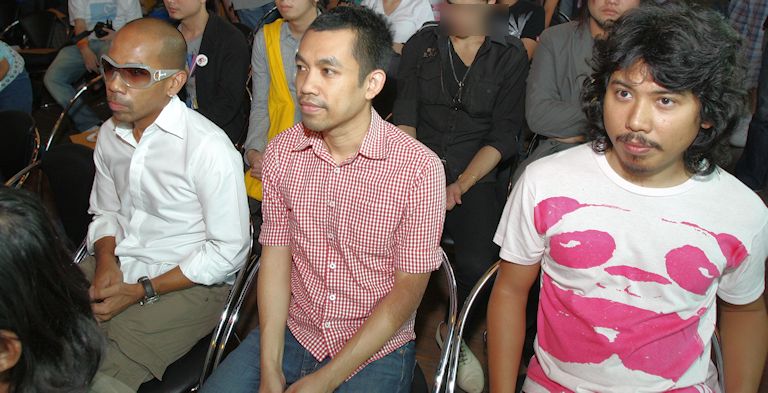
Abb.: Modern
Dog (โมเดิร์นด็อก), 2007
[Bildquelle: Sry85 / Wikipedia. -- GNU FDLicense]
|
"Modern Dog (Thai language: โมเดิร์นด็อก) is a Thai rock band, formed in 1992. They issued their first album in 1994, selling 500,000 copies. The band has issued five studio albums, selling a total of 2 million copies. The band's 2004 album, That Song (แดดส่อง), was produced by Tony Doogan (Belle & Sebastian, Mogwai), with the title track arranged by bassist Yuka Honda (本田 ゆか), of Cibo Matto (チボ・マット). The album also featured guest appearances by Yumiko Ohno (小野優美子, 1984 - , of Buffalo Daughter (基本情報) and Sean Lennon. It featured three singles that went to No 1 in Thailand.[1] Extending their reach beyond Thailand, Modern Dog played in Tokyo in 2003.[2] In July–August 2006 the band toured the United States, including a show at the Knitting Factory in New York City. Members
[Quelle: http://en.wikipedia.org/wiki/Modern_Dog. -- Zugriff am 2013-04-09] |
1994
Gründung der Pop-Band La-Ong-Fong (ละอองฟอง)
Die Gruppe auf Spotify:
URI:
spotify:artist:3H4GyprVePH2pCJIyjydCF
URL:
https://open.spotify.com/artist/3H4GyprVePH2pCJIyjydCF
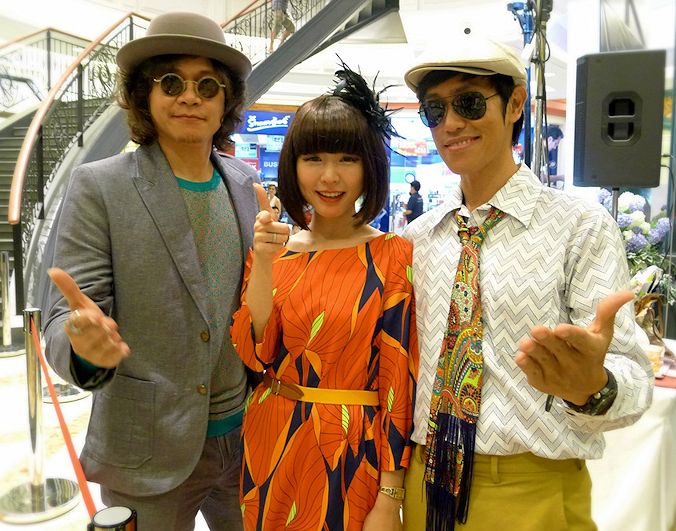
Abb.: La-Ong-Fong
(ละอองฟอง), 2012
[Bildquelle: BetterFree
/ th.Wikipedia. -- Kein Copyright-Vermerk]
|
"La-Ong-Fong (Thai: ละอองฟอง) is a Thai pop band formed in 1994 and released their first album, "Volume 1", in 1996. The band's music style got influenced from Swedish pop. The name of the band came from Enfant (French, "Kid, Children"), transliterated as "อองฟอง" (pronounced, Ong-Fong). Then they put a word "ละ" (La) in front of it, to make it sounds more Thai — "ละอองฟอง" (La-Ong-Fong) — as "ละออง" (La-Ong) in Thai has its own meaning as "drizzle", and "ฟอง" (Fong) as "bubble". Some of their songs has been covered in Malay language by Malaysian artists." [Quelle: http://en.wikipedia.org/wiki/La-Ong-Fong. -- Zugriff am 2013-04-09] |
1994
Bangkok: Gründung des privaten Golfclubs Rajapruek Club (สโมสรราชพฤก)
Abb.: Rajapruek Club (สโมสรราชพฤก)
[Bildquelle: ©Google Earth. -- Zugriff am 2013-10-12]
1994


Es erscheint folgende Biographie von Josip Broz Tito (1892 - 1980), Generalsekretär des Bundes der Kommunisten Jugoslawiens, Ministerpräsident und Staatspräsident Jugoslawiens in der Übersetzung König Bhumibols:
Auty, Phyllis <1910 - 1998>: Tito : a biography. -- New York : McGraw-Hill, [1970]. -- 343 S. : Ill. ; 23 cm.Thai Titel:
ของฟิลลิส ออตี [Phyllis Auty] <1910 - 1998>; พระบาทสมเด็จพระเจ้าอยู่หัวภูมิพลอดุลยเดชฯ <1927 - > [Übersetzer] : ติโต = Tito. -- กรุงเทพฯ : อมรินทร์พริ้นติ้ง, 2537 [= 1994]. -- 121 S.
Abb.: Einbandtitel
Abb.: Josip Broz Tito, 1978
[Bildquelle: Bill Fitz-Patrick, White House photo / Wikimedia. -- Public domain]
Abb.: Jugoslawien 1954 - 1991
[The Cartographic Section of the United Nations (CSUN) / Wikipedia. -- Public domain]
1994
Erste Nummer der Comics-Serie บริษัทอัดผี von อารีเฟน ฮะซานี (1957 - ).
Abb.: บริษัทอัดผี
[Bildquelle: th.Wikipedia. -- Fair use]
1994

Erstmals erscheint das Manga Doraemon (โดราเอมอน - ドラえもん) in einer lizenzierten Übersetzung in Thailand (seit ca. 20 Jahren waren unlizenzierte Fassungen erhältlich).
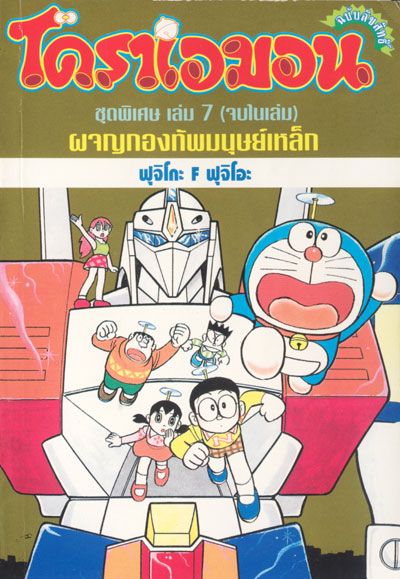
Abb.:
Einbandtitel
[Bildquelle: th.Wikipedia. -- Fair use]
1994

Es erscheint:
Sirin Phathanothai: The dragon’s pearl / by Sirin Phathanothai ; with James Peck. -- New York : Simon & Schuster, 1994. -- 336 S. : Ill. ; 24 cm. -- ISBN: 0671795465
Abb.: Einbandtitel
"The Dragon's Pearl is the autobiography written by Sirin Phathanothai telling her experiences growing up in the 1950s and 1960s among the leaders of China. The book tells the story of how in 1956, when Bangkok-Beijing relations were tense at the height of the Cold War, Thailand was trying to survive the power struggle between China and the United States in Asia. The new Thai government desperately needed American money for its unstable economy, yet it could not ignore the threat posed by China, which had just demonstrated its strength in the Korean Peninsula. While the Thai government openly welcomed Americans and denounced China, the prime minister of Thailand secretly sent the two children of his principal adviser, Sang Phathanothai, to China as a goodwill offering and to be brought up there by Premier Zhou Enlai; thus replaying the act of making human pledge practiced in China throughout history.
The children became the wards of Premier Zhou Enlai. Sirin was 8 years old; her brother 12. The book relates how she was caught up in the Cultural Revolution in the mid-1960s. Accused of the crime of having been reared in a bourgeois Thai family and by the capitalist sympathizer Zhou, she was forced to denounce her family in public. Then, in an unforeseen turn of events, Sirin becomes a Communist Party heroine by saving two children in a fire -but she was required to announce that her deed was inspired by the teachings of Chairman Mao Zedong. Sirin's memoir provides a valuable eyewitness account of the Cultural Revolution.
TV productionsThe book was translated to several languages. A joint Thai-Chinese production made a TV mini-series adaptation that aired in Thai, Chinese and Japanese television. It was broadcast in Thailand in 1998 under the name of Mook Mangkorn."
[Quelle: http://en.wikipedia.org/wiki/The_Dragon%27s_Pearl. -- Zugriff am 2012-06-13]
1994
Es erscheint die Sammlung von Kurzgeschichten
ชัชวาลย์ โคตสงคราม [Chatchawal Khotsongkhram] <1968 - >: เหมือนรถไฟจะมา ["Als ob der Zug käme"]
Abb.: Einbandtitel
1994
Es erscheint der Roman
สังกม เภสัชมาลา [Sangkhom Phesatchmala]<1957 - >: หวดฮ้าง ["Der verlassene Reiskochtopf"]
Der Titel หวดฮ้าง (ອວດຮາງ) ist Laotisch. Es ist eines der ganz wenigen Beispiele von thailändischer Literatur mit einem Lao-Titel.
Abb.: Einbandtitel
1994
Architekt Nithi Sthapitanonda (นิธิ สถาปิตานนท์, 1947-....) von A49: Fertigstellung des Hauses
- Ban Chang Nag, Chiang Mai (เชียงใหม่)
1994
Briefmarken:
1994

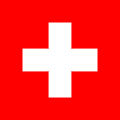
Erstes Musikfestival in Verbier (Schweiz). Prinzessin Galyani Vadhana (กัลยาณิวัฒนา, 1923 - 2008) besucht dieses Festival jedes Jahr von ihrem Wohnort Pully (Lausanne) aus.
Abb.: Lage von Verbier
[Bildquelle: OpenStreetMap. -- Creative Commons Lizenz (Namensnennung, share alike)]
1994

Es erscheint
Sargent, Inge <1932 - >: Twilight over Burma : my life as a Shan princess. -- Honolulu : University of Hawai Press, 1994.. -- 216 S. : Ill. -- ISBN 0585234876
Deutsch:
Sargent, Inge <1932 - >: Mein Leben als Sao Thusandi, Prinzessin der Shan. -- Bergisch Gladbach : Bastei-Lübbe, 1997. -- 315 S. ; 18 cm. -- (Bastei-Lübbe-Taschenbuch ; Bd. 61920 : Abenteuer Leben). -- ISBN 3-404-61920-X
Später u.d.T.:
Sargent, Inge <1932 - >: Dämmerung über Birma : mein Leben als Shan-Prinzessin. -- Zürich : Unionsverl., 2006. -- 315 S. Ill. 19 cm. -- (Unionsverlag-Taschenbuch, 357). -- ISBN 9783293203570
Abb.: Einbandtitel
Abb.: Einbandstitel
"Inge Sargent wurde 1932 als Inge Eberhard in Kärnten als Tochter eines Försters geboren. Zu Beginn der 1950er-Jahre reiste sie als Stipendiatin zum Studium nach Colorado. Dort lernte sie ihren zukünftigen Ehemann Sao Kya Seng (စဝ်ကြာဆိုင်; 1924–1962) kennen, birmanischer Bergbauingenieur und Staatsoberhaupt von Hsipaw (သီပေါမြို့), dem nördlichen Shan-Staat. Sie heirateten 1953 und zogen nach Birma. Das Prinzenpaar nahm im damaligen Fürstentum Reformen in Angriff: Neue Landwirtschafts- und Bergbaumethoden wurden eingeführt, Reisfelder an Bauern übereignet, gegen Korruption wurde vorgegangen. Inge Sargent engagierte sich zudem im Bildungsbereich und kämpfte gegen die hohe Kindersterblichkeit.
Nach dem Staatsstreich 1962, der Verhaftung und dem Verschwinden ihres Mannes, stand Inge Sargent unter Hausarrest. 1963 gelang ihr zusammen mit den zwei Töchtern die Flucht, erst nach Österreich, dann weiter in die USA. In den USA schloss sie ihr Studium ab und arbeitete danach als Deutschlehrerin. 1968 heiratete sie Howard Sargent, mit dem sie 1999 eine Hilfsorganisation für birmanische Flüchtlinge, »Burma Lifeline«, gründete. Die Organisation versorgte Flüchtlinge mit Nahrungsmitteln und medizinischer Pflege und informierte über die Missstände unter dem birmanischen Militärregime. Für ihr Engagement erhielt Inge Sargent 2000 den Internationalen Menschenrechtspreis der United Nations Association.
1994 erschien ihre Autobiografie. Der Besitz dieses Werks wurde während der Militärdiktatur in Birma unter Gefängnisstrafe verboten, im Untergrund kursierten jedoch Raubkopien. Dämmerung über Birma wurde 2015 fürs deutsche Fernsehen verfilmt."
[Quelle: http://www.unionsverlag.com/info/person.asp?pers_id=1804. -- Zugriff am 2016-05-02. -- Fair use]
1994

Der US-Programmierer Lou Montulli (1970 - ) erfindet die HTTP-Cookies, mit denen der Besuch von Web-Sites verfolgt werden kann.
1994

Im japanischen Automobilzulieferer DENSO Corporation (株式会社デンソー) wird der QR Code (Quick Response Code) erfunden. Er setzt sich in der Folgezeit in verschiedensten Bereichen durch
Abb.: Thai-Briefmarke mit QR Code zur Teilnahme an einer Lotterie, 2013-08-04
[Fair use]
ausführlich: http://www.payer.de/thailandchronik/ressourcen.htm
Zu Chronik 1994 / B. E. 2537. -- 2. datiert